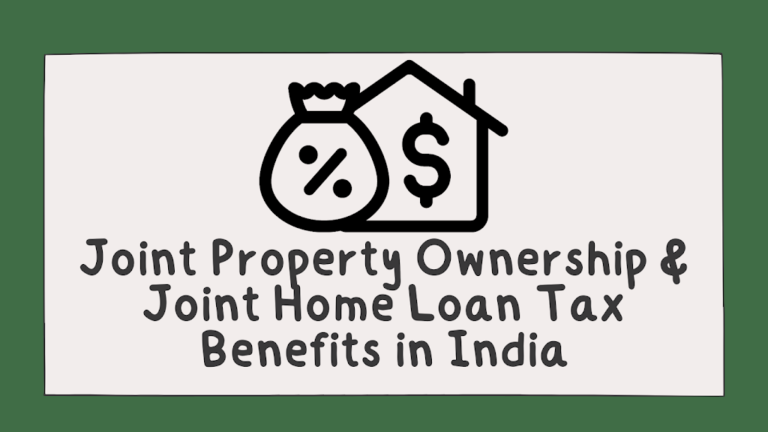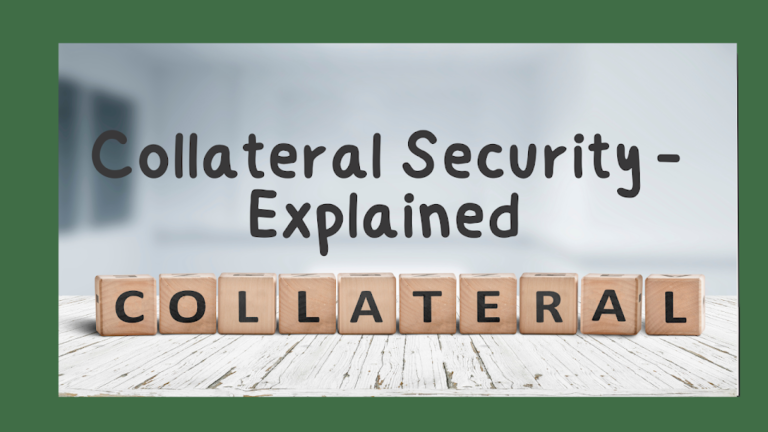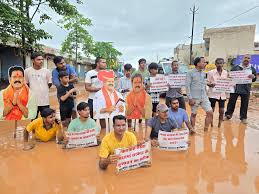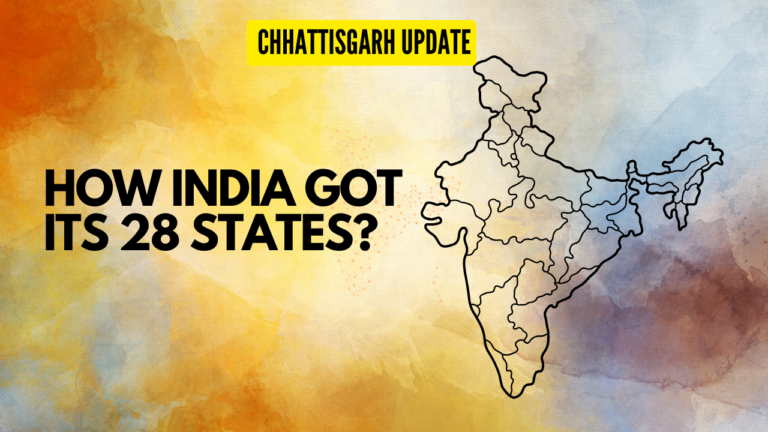Welcome tomy blog where we unlock knowledge of finance. In today’s artical, we are going to talk about Personal Loans. We will learn in detail how to take a personal loan. In what situation should you take a personal loan. In previous videos, I have talked about how a personal loan is the most expensive loan. So you should generally avoid it. In this video, we’ ll see in what situations you should go with a personal loan.
What is the eligibility requirement and what is the documentation required? How much is the intrest charged generally. We will learn everything in detail and at last, I will give you tips on what are better alternatives to personal loan or how can you get eligible for a loan. Stay tuned to this video till last. let’s go straight to the blackboard. So first, let’s understand what is a personal loan and what are its important features.
So personal loan is an unsecured loan with high-interest rates, we have talked about this earlier. An unsecured loan means there is no security involved. Like in the case of home loans, your property is mortgaged in case of a gold loan, your gold is kept as a security. In case of car loan, car is kept as security. There is no security of any sort in the personal loan, hence the interest is high.
Secondly, you are getting a personal loan based on your credit history. Because there is no security involved, so credit history means if you have taken any loans in the past or owned a credit card so how was your payment history, if you paid your dues on time you credit score will be good. On that basis, you will get a personal loan.
The approval is instant in the case of a personal loan. You can get approval in under 30 minutes. So this is the biggest positive point, minimum documentation is required and the load approval is instant. So for what purposes can you take a personal loan? So the main purposes to get approved in banks are one is if you are planning a vacation, you can easily get a personal loan for that. Or if you want to renovate your interior, you can easily get a loan for that. If there is a wedding in your family, If there is a medical emergency, or you want to fund education of yours, your childen or your relatives. Or if you want to buy a big home appliance.
Or if you want to transfer a loan of high-interest rate you can take a personal loan and transfer. These are some common purposes when a bank easily approves a personal loan. And as I told you earlier personal loan is unsecured, no collateral as security is needed. So in this case, if there is a default in the loan, and the bank can’t recover the amount so what happens is, your credit score is affected badly. Credit score as I have already told you in earlier videos that CIBIL score is calculated out of 900, and generally, you should try to keep your score 750+ .
Keeping it over 750 have benefits that you can get credit card and loans very easily. You don’t want your credit score to be bad, so you should not default on your loan payments. Definitely is the bank doesn’t get their money, they will try to ruin your credit score. A loan size of a minimum of Rs 50,000 gets approved very easily in most banks as a personal loan. And the maximum it goes to upto Rs 25 lakh. In some banks it could be Rs 15 lakh. And some bank allows upto 25 lakh.
You will generally get a tenure of 1 year to 5 years, a minimum of 1 year, and a maximum of 5 years. Interest rates are always high and this is the biggest drawback. I will write here as well this is the biggest drawback so I always advise you to prefer a personal loan the least. The interest rate for a personal loan is generally 3- 10% higher than the home loan. So for example, let the home loan rate be, 8% so keep in mind personal load will be of 12- 20% intrest rate, whenever home loan is of 8%.
If we talk about a customer of the same profile getting a home loan at an interest rate of 7- 8% will get a personal loan at a rate of 12- 12.5%. So this is a lot at least 40- 50 % more than a home loan. Still, there could be some cases where you need to take a personal loan we will see those later in the video. For example, you take a personal loan of 5 lakh at an interest rate of 15% per annum. So your EMI will be around Rs 12,000. And you will definitely need to repay the principal amount of 5 lakh. And your total interest payment after 5 years will be around Rs 2 lakh 13 thousand 7 hundred.
So you can see, you have taken a loan of Rs 5 lakh and you need to pay almost half as interest under 5 years. Your total repayment is calculated to be around Rs 7 Lakh for a loan of Rs 5 Lakh. So, secondly, there is a lock-in period in generally every personal loan of minimum around 3 months to 12 months in which you can’t close your loan. The bank would want to earn a minimum interest.
So generally every bank keeps a lock-in period of a minimum of 6 to 12 months. Then how is a personal loan paid? It is generally paid electronically we call it Electronic Clearance Scheme (ECS) or Auto debit. So this is generally debited from your bank, the bank auto-debits the EMI amount. Another option is post-dated checks, nowadays it is preferred less and ECS and Auto debit are prefered more. Most of the banks will ask to fill an ECS form, so that your EMI will be deducted automatically. These are the important features of personal loans. Now let’s see the eligibility requirements for this.
How much loan can you get and what factors determine that. First of all, it depends on your repayment capacity, it means what is your annual income, and how many other loans are you already paying. Let me explain you with an example, let say your monthly income is Rs 60,000 and let’s say you are already paying EMI if i suppose your current EMI let say you are paying an EMI of Rs 15,000 and i have alredy told you in earlier videos, that you can just pay max of 50% of your income as EMI.
In this way your loan eligibilty gets calculated. And this other Rs 30,000 is used for your household and normal expenses and you can pay EMI of maximum Rs 30,000. If you are currently paying an EMI of Rs 15,000 so you can afford a maximum EMI of the rest Rs 15,000 right. So over this sum of Rs 15,000, your eligibility will be calculated. And this way will know your capacity. So your minimum income should be Rs 15,000 per month then only your personal loan get approved.
In some banks it can also be Rs 20,000, every bank has a different requirement but generally it is of Rs 15,000- 20,000. In today’s case and future, it can increase as well. Then your customer profile is seen if you are salaried, self-employed professional or run a buisness what type of occupation are you in? What type of your company is? How is your income stability. If there are many ups and downs in your income, so maybe you cannot get a loan easily. A loan for the salaried class gets approved very easily because of income stability.
In the case of professional or business if there is a lot of ups and downs in your income so your loan will get approved according to minimum monthly income generally. Then they see your age, generally for salaried, minimum age is 21 years and maximum 60 years. In the case of professional or business minimum age is accepted to be 25 and the maximum to age 65. 25 years is taken because they want your business to be in the running of a minimum of 3 years. So in the case of professionals and businessmen, the business should be running stable for at least 3 years.
Other than this, a credit score is also a big deciding factor always in a personal loan, whenever there is an unsecured loan I have already told you many times a score of 750 is considered to be good so your should try to increase your score if your score is less. Now how to increase CIBIL score, I will surely make a video on that. Your assets are liability are accounted for, your liability should not be more than your assets. Let’s say your assets are Rs 1 crore and have already taken liabilities of Rs 50- 60 lakh.
So the bank sees that negatively, your loan will not get approved easily in that case. This tells you to have a habit to take a lot of loans right. so repayment could be a little problematic for you. Other than this, Your dependents are also looked upon. Now in this example, we see, your income is Rs 60,000 have lot of dependents, and so your monthly expense itself is Rs 50,000. So your eligibility will be calculated according to Rs 10,000.
Then other than this, income earned by the spouse is also accounted, it may happen you have a lot of dependents, but your husband or wife also earns so your eligibility could also be calculated by adding it. Bank also calculates your spouse’s income for eligibility. These are the factors used to calculate eligibility, now let’s see some additional charges, when we take a personal loan or any loan then one is we need to pay interest it is the principal right. this is the the main charge of bank. other than this there are some additional charges that you need to know.
One is the processing fee when you apply for a loan then 1-2% of loan amount + GST is charged as a processing fee by bank these are basically admin charge of bank Whatever the cost, of the employee, admin charges, maintenance fee, and documentation charge they take from processing fee. Other than this there are some Pre-payment & Foreclosure charges, some banks do not charge this especially when we talk about floating interest, generally banks do not charge this fee But yes, say if you pay your outstanding loan amount by loan transfer, let’s suppose you are paying using another bank right.
You are getting a low-interest rate so this may happen that you are transferring your bank from there, so you might need to pay charge in this case. Pre-payment & Foreclosure charge is generally, 2-3% of outstanding loan amount. So if you are applying for a personal loan in any bank you should try that this Pre-payment & Foreclosure charge are none, should be nil there. You should surely negotiate this with the bank. Other than that loans are also sanctioned with a fixed interest rate in this case generally bank charges 2-3% of outstanding loan amount as Pre-payment & Foreclosure charge. Now this Pre-payment & Foreclosure charge means, let say you took a loan for 5 years and after 2 or 3 years you get 2 lakh or more and you made a pre-payment So that we call as pre-payment or foreclosure if you make pre-payment & foreclosure like this then can charge you. Then GST is also applicable on these charges like processing fee, pre-payment & foreclosure charge or if any of your checks bounce, there are some charges for that.
So on these service charges 18 % GST is also applicable, it could change in the future but GST is always applicaple on servies. These were some additional charges, now let’s quickly see some documentation what kind of documentation is required. First let’s talk about salaried class One is application form with photograph then your identity, residence and age proof like Pan card, Aadhar card and Passport ,etc. You need to show the bank statement for the last 6 months, and the salary slip for the last 3 months.
One cheque for processing fee, 1- 2% charge that I talked about earlier. Income tax returns and Form 16 for the past year are required for the salaried case. These documents are also required in case of self-employed and business just that in case of business salary slip is not required. Other all document are required. And get along if you are in business, so proof of business existence and busisness profile is required. So the business profile of the last 3 years is required.
If you are a self-employed professional You are CA, or Chartered Accountant (CA), or any architect or you are a lawyer, so if you work like an independent professional then your education certificate is also required. Then along with that in case of business and professional, your 3 years of Income Tax return is also required. We were talking about only 1 year but here 3 years is required. And in addition to this your Audited balance sheet and profit & loss account statement is also required.
These all documents are required for a personal loan these are common for all types of loans. I have also told you about these in my previous videos. Still i run you through once, here. Now lets talk about pros & cons and some tips. Loans have some pros & and some cons let see those. If we first let’s talk about the pros of a personal loan. So minimum documentation is required, hassle-free process, and instant approval. because you can easily apply in your bank where you do banking. And the second advantage is instant approval, as we talked about earlier your loan could also get approved within 30 mins if you apply to your bank. But I don’t say that you have to always apply in your bank right. you could if there is some emergency but you will not get a good interest rate if you apply in your own bank because how will you find competetive rate right.
This is also a very big disadvantage, let come to cons First of all, this is a very expensive loan as we talked about personal loan that it has high intrest rates as i talked about home loans that personal loan could be 3 -10% higher than home loan. Secondly, there is a lot of variation in interest rate as we saw earlier that there is a variation from 12% to 20 %. Now, this variation depends a lot on the customer profile.
Now other secured loans like home loans and loans against property now because the property is kept as collateral as security so there is not a lot of variation. Now, if you have a good profile then you will get a loan at a minimum interest rate. But suppose you defaulted even a little in the past or your credit score is low so in cases like these, you can also be charged high interest up to 18 -20 % so you should try to always maintain a good credit score because could be required at any time, loan or credit card right?
So these were some pros and cons, now I will give you some tips The first tip I always give is to compare interest rates, in today’s date, there are many online sites where you can compare interest rates And you should negotiate, every bank negotiates interest rates you can easily negotiate from 1 to 1.5%. I’m not saying if the bank gives a minimum interest rate of 12% it will give you less than that to you.
But suppose initially the bank quotes 14% then you can negotiate it to let say 13%. so this much is very much possible. So try to negotiate and in whichever financial institution you are getting the lowest interest rates you should go there. Then explore cheaper loans first. What does this mean? This mean, let say your loan requirement is very high, 15 lakh or 25 lakh so these amount are rather large, so it is better than personal loan let suppose you are buying a property then take a home loan. If you have any other requirements, you can take a loan against the property. If you have a property, you can take a loan by mortgaging that property.
Second, another example is of top-up loan, suppose you already have a home loan in progress you can also get a top-up loan over it. A lot of people are unaware of this option but you can take a top up loan. I have already made videos in detail on these three, if you watch, you will get to know what are the important features of home loan, loan against property, and top up loan and how can you apply them. So do watch these videos, you can search on youtube. Go for personal loans for smaller amounts right.
When there is low amount is required Suppose you require a small amount of 2 lakh to 5 lakh then you can take a personal loan. And second for a shorter time period. Try to repay the loan as soon as possible. Try to take a loan for a small period of time like 2 years to 3 years or a maximum of 4 years there is no need to go for 5 years or 6 years. So for the least amount of time you take a loan the least amount of interest amount you need to pay right? Then only take a personal loan for urgent requirements if you have time and if you can apply you can go for these loans like home loan, loan against property, topup loan if you are taking a loan for education, you can take an education loan.
Home improvement loans are also given seperately these types of loans have a low-interest rate, so a personal loan should be your last option. Then suppose if you have taken credit card debt, so interest rate over credit cards is very high. These go from 20 -30%, in fact, can also go as high as 35%, so it’s better to take a personal loan, let say you are getting a personal loan at 12% so finish credit card debt with a personal loan right. So you should try to always keep loans of low intrest rate and repay high intrest rate loans. So if you have an option, suppose you have two loans home loan and a personal loan so try finish personal loan first. after than home loan repayment should be your last option right because this is the cheapest loan.
So there we were some of my tips. I hope after watching this video you get an idea when and in what situations you should take a personal loan. If you liked this video then do like and share it with your friends and family members so that they could also be benefitted from this video. If you have some suggestions related to this video or related to the channel or if you want to suggest a topic for future videos then you can tell us in the comment section below. I share this type of financial informative and interesting video on this channel. so to get the notification of the latest video then by subscribing from below, press the bell icon on your phone. So see you in the next informative video. till then keep learning, keep earning, and be happy as always





